
Dawn
Abstract sunrise wall art
Artist: Rochelle Salava
HD fine art prints are inserted into a matboard. Sizes are approximate and may vary slightly.
Horizontal wall art
Print size
12 x 8" | 30.48 x 20.32 cm
Matboard size
16 x 12" | 40.64 x 30.48 cm
Frame size
0.78 | 2 cm
Print size
24 x 16" | 60.96 x 40.64 cm
Mat size
31.5 x 23.5" | 80.01 x 59.69 cm
Frame size
1.18" | 3 cm
Print size
30 x 20" | 76.20 x 50.80 cm
Matboard size
38 x 28" | 96.52 x 71.12 cm
Frame size
1.18" | 3 cm
Print size
36 x 24" | 91.44 x 60.96 cm
Matboard size
43.5 x 31.5" | 109.22 x 80.01 cm
Frame size
1.18" | 3 cm
Print size
45 x 30" | 114.30 x 76.20 cm
Matboard size
53 x 38" | 134.62 x 96.52 cm
Frame size
1.57" | 4 cm
"The darkest hour is just before dawn." - Author unknown
Kiama, NSW
Bright red line on the horizon as the sun peaks over the ocean from a clifftop view at Cathedral Rocks.
Shipping is free worldwide.
If you live outside Australia, you may need to pay import tax or other taxes/fees. Read our Shipping policy for more details.
Wall art is custom made to order. Unframed prints are shipped within 2 weeks. Wall art is shipped within 4 weeks. Framed prints are shipped within 6 weeks from date of order.
Artwork is custom made to order. Refunds and exchanges are not applicable if you change your mind. Read our Refund policy for more details.
*The visuals shown are mockups.


Fine art prints
HD fine art print - pure alpha cellulose - the highest quality with an ultra matte museum finishing
- printed on Canon DreamLabo 5000
- HD technology used for prints features a print longevity certified by the JEITA Institute of Japan at 300 years
- ECO-friendly printing - no hazardous chemicals used
- prints are inserted into 100% archival matboards
What is a fine art print?
A fine art print is a museum quality print, printed on high quality acid-free paper. Also the inks used for printing those prints are supporting the longevity of the fine art print.
What paper is used for fine art prints ?
We use pure alpha cellulose paper for our fine art prints. Paper used for fine art printing is not artificially bleached and that ensures the longevity of the prints (if properly treated).
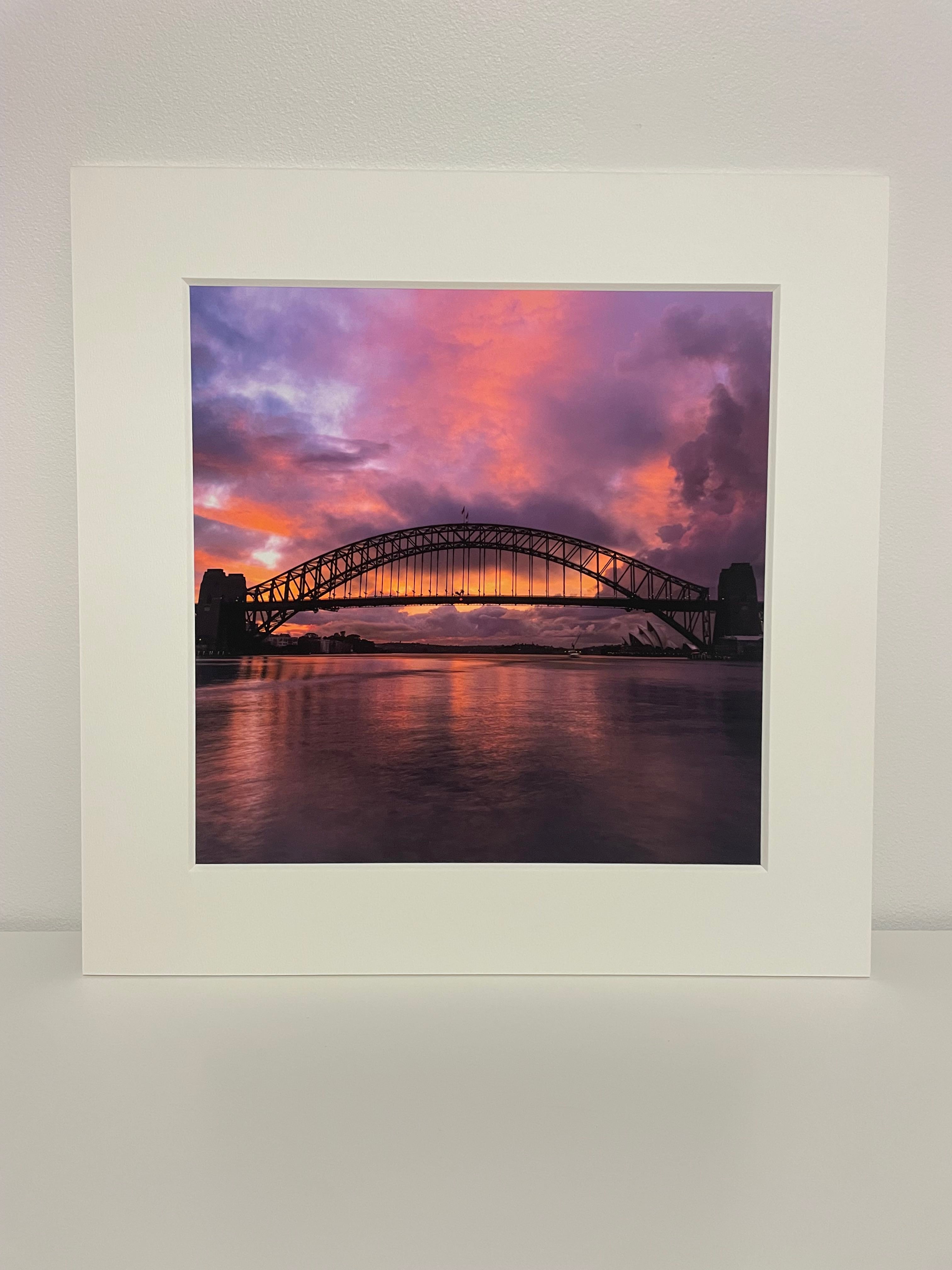
White Matboard
Bright and neutral. Suits any image or frame.
- 100% archival certified core and backing
- museum/gallery quality
- 1/4" thickness
- elegant, heavy duty and durable
- mats are intended to be framed

White Matboard with V-Groove
Clean with refined detail. V-groove adds a subtle, elegant touch.
V-groove - a thin line, or groove, cut into the surface of the matboard to generate additional focus or accent to your artwork.
- 100% archival certified core and backing
- museum/gallery quality
- 1/4" thickness
- elegant, heavy duty and durable
- mats are intended to be framed
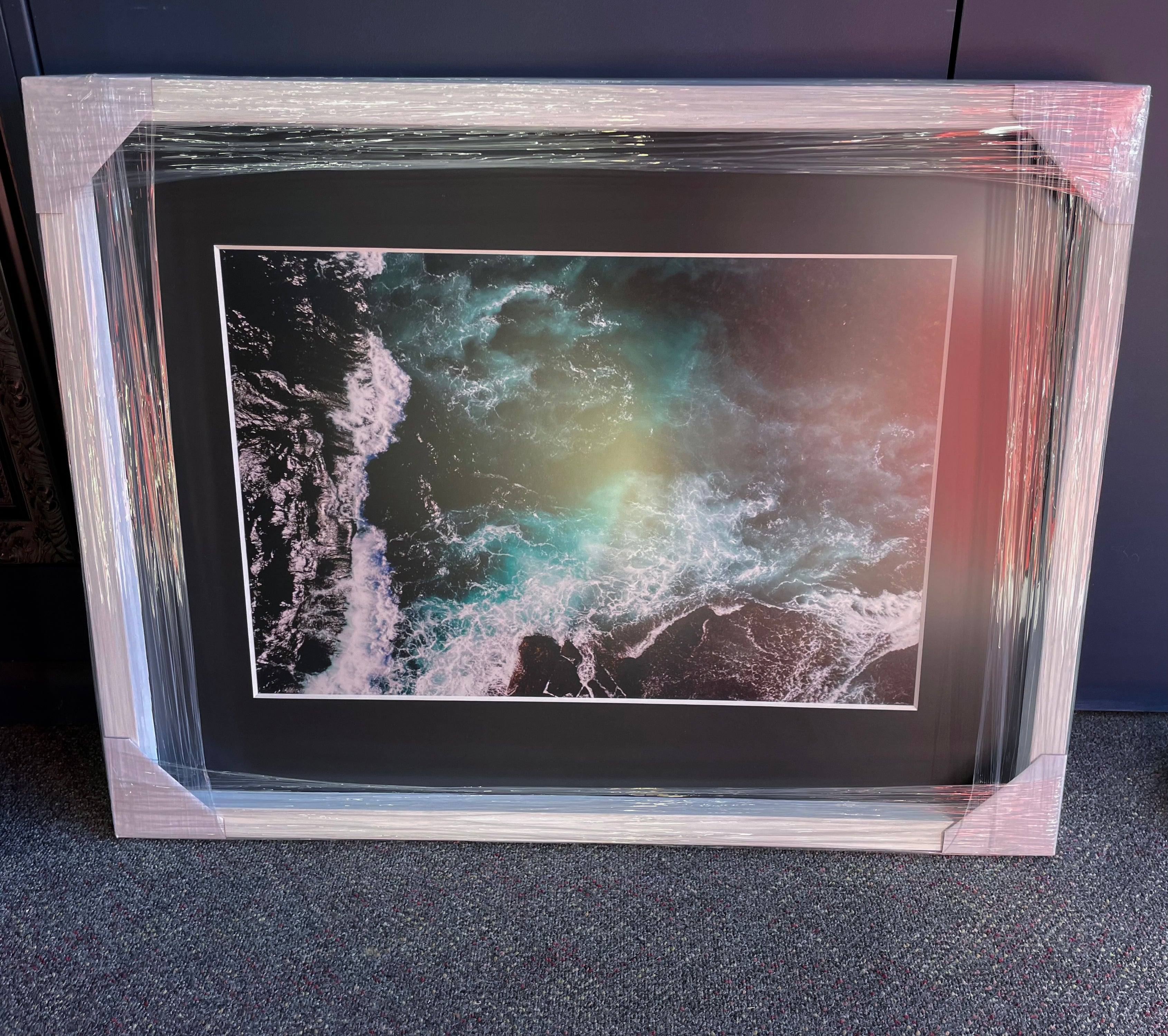
Black Matboard
Bold and dramatic. Enhances depth, especially in dark or black and white prints.
- 100% archival certified core and backing
- museum/gallery quality
- 1/4" thickness
- elegant, heavy duty and durable
- mats are intended to be framed

Black Matboard with V-Groove
Strong and sleek with a touch of sophistication.
V-groove - a thin line, or groove, cut into the surface of the matboard to generate additional focus or accent to your artwork.
- 100% archival certified core and backing
- museum/gallery quality
- 1/4" thickness
- elegant, heavy duty and durable
- mats are intended to be framed
What is a matboard?
A matboard is a thick paperboard frame around the artwork, which is protecting it from damage and enhancing the visual presentation of the artwork.
Why should I choose your matted prints ?
We focus on quality first and that applies also to our matboards. They are 100% archival certified and in comparison with generally used mats on the market they provide better protection of the artwork. They are thicker and as opposed to standard mats our matboards also protect the back side of the prints which is not typical for standard mats available on the market.

White Frames
Clean and minimal. Great for bright, airy photographs and modern interiors.
We protect our HD fine art prints by offering conservation-style custom framing by our framing specialist.
Our framing features Optium Museum Acrylic®:
This museum-quality acrylic is lightweight, and provides UV protection to preserve your artwork.
- 99% UV protection
- abrasion resistant
- anti-reflective
- anti-static
- shatter resistant
- acid free materials
- used in museums worldwide

Black Frames
Sleek and modern. Perfect for black and white or moody images.
We protect our HD fine art prints by offering conservation-style custom framing by our framing specialist.
Our framing features Optium Museum Acrylic®:
This museum-quality acrylic is lightweight, and provides UV protection to preserve your artwork.
- 99% UV protection
- abrasion resistant
- anti-reflective
- anti-static
- shatter resistant
- acid free materials
- used in museums worldwide

Scandinavian Oak Frames
Light and natural. Adds warmth and suits minimalist or rustic spaces.
We protect our HD fine art prints by offering conservation-style custom framing by our framing specialist.
Our framing features Optium Museum Acrylic®:
This museum-quality acrylic is lightweight, and provides UV protection to preserve your artwork.
- 99% UV protection
- abrasion resistant
- anti-reflective
- anti-static
- shatter resistant
- acid free materials
- used in museums worldwide
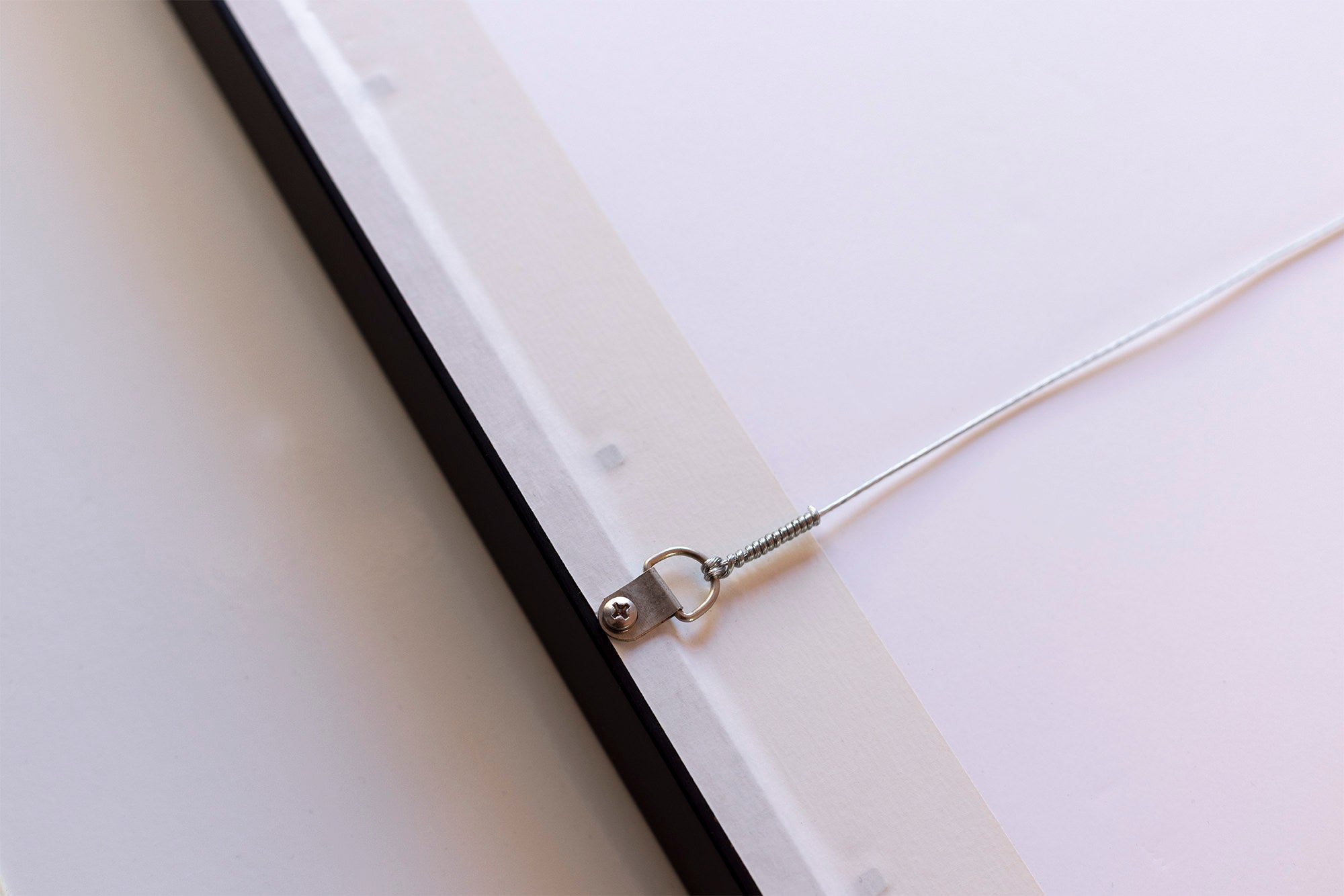
Stainless Steel Hanging System
Framed fine art prints are encased in acid free materials to retain their museum grade quality.
Note: This is also the same hanging system for acrylic, canvas, metal or leather wall art ordered with a shadow box frame.
Why should prints be framed?
Framing plays a crucial role in the preservation and protection of the value of the artwork. Conservation framing, which we use for our artwork guards against environmental damage, including UV light, humidity, temperature changes, and pollutants, ensuring long-term preservation.
Why do prices of framing options vary?
Prices of framing options vary because materials used for framing are varying, same as the craftsmanship involved in framing. In general, low-cost framing options do not guarantee the same standard of craftsmanship and longevity of the artwork.
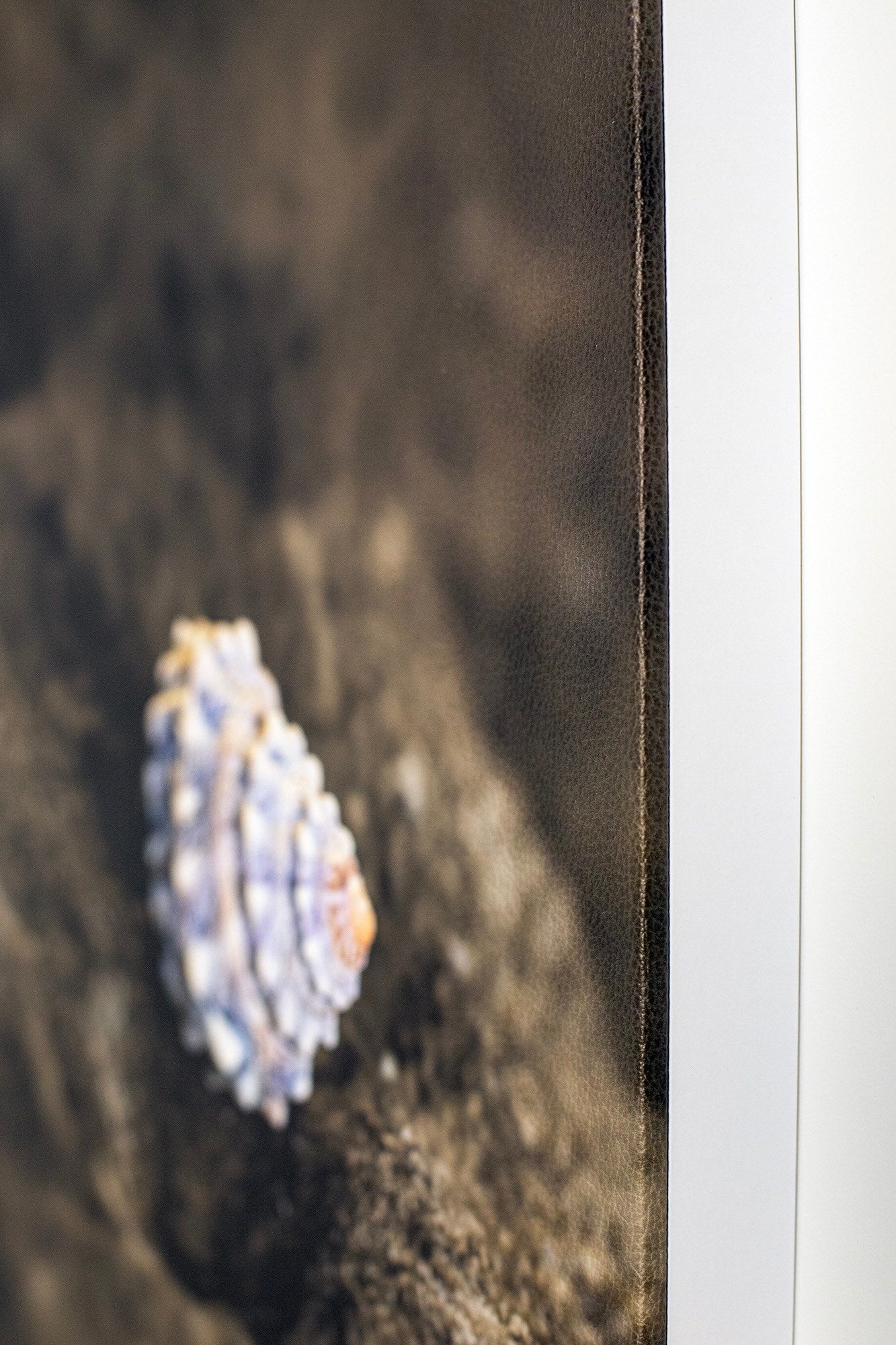
Leather Wall Art
Premium Italian leather with a smooth, luxurious finish. Elegant and timeless.
Online orders include the following features:
- genuine Italian leather
- 1.2" | 3 cm white panels
- 3D moulded hangers
- Ready to hang
Customisations
Add a note at checkout if you would prefer the following:
- 1.2" | 3 cm black panels
- 2.3" | 6 cm black panels
- 2.3" | 6 cm white panels
Note:
Eco leather is available on request. Same price as acrylic, canvas or metal wall art.
What is leather wall art?
Leather wall art is a high definition wall art printed on genuine Italian leather or eco leather.

Acrylic Wall Art
Vibrant and ultra glossy. Crystal-clear acrylic enhances colour and detail with a modern look.
Online orders include the following:
- HD fine art print
- inkjet printing with 12 fine art inks
- highest quality acrylic with UV filter
- 1.2" | 3 cm white panels
- gloss finishing
- 3D moulded hangers
- Ready to hang
Customisations
Add a note at checkout if you would prefer the following:
- anti-glare matte finishing
- 1.2" | 3 cm black panels
- 2.3" | 6 cm black panels
- 2.3" | 6 cm white panels
What is acrylic wall art?
Acrylic wall art is a fine art print protected under an ultra transparent layer of acrylic. The print is protected by a wooden panel on the back, which is laminated.
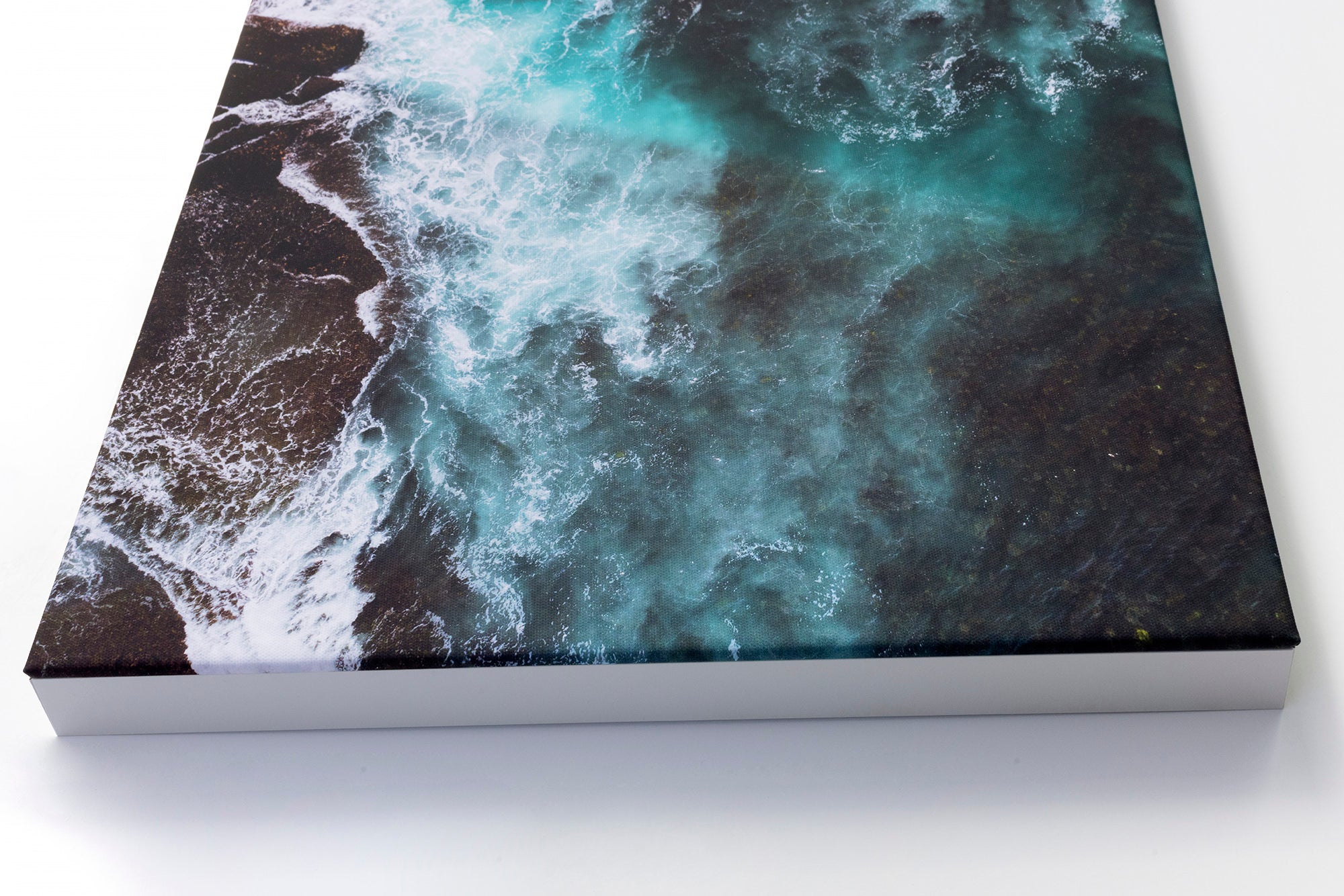
Canvas Wall Art
A fine art canvas with rich texture and deep colour. Ready to hang with a sleek, frameless profile.
Online orders include the following:
- 100% cotton canvas
- archival certified 12 colour printing
- anti-glare finishing
- 1.2" | 3 cm white panels
- 3D moulded hangers
- Ready to hang
Customisations
Add a note at checkout if you would prefer the following:
- 1.2" | 3 cm black panels
- 2.3" | 6 cm black panels
- 2.3" | 6 cm white panels
What is canvas wall art?
Canvas wall art uses canvas fabric as a medium. We use 100% cotton, respecting the standard of fine art printing.
How to choose canvas wall art?
When choosing canvas wall art, it is important to be aware that on the market are available imitations using polyester or PVC instead of cotton as a medium. Lower quality finish of the wall art also leads to shorter lifespan of the artwork.
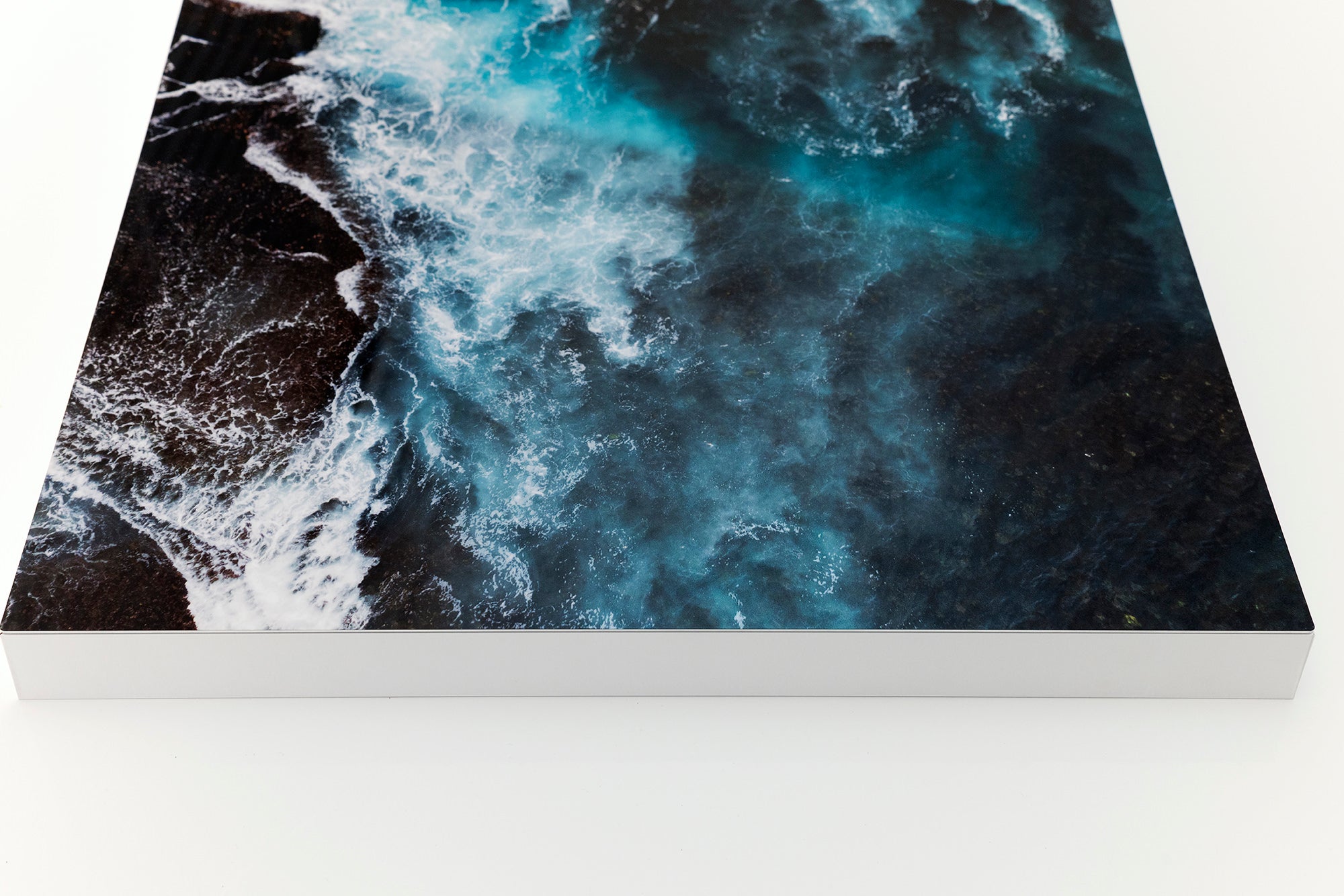
Metal wall art
Printed on brushed aluminum. Sharp, modern, and industrial with a striking metallic sheen.
Online orders will include the following:
- highest quality aluminium by ChromaLuxe®
- Dye sublimation printing
- 1.2" | 3 cm white panels
- gloss finishing
- 3D moulded hangers
- Ready to hang
Customisations
Add a note at checkout if you would prefer the following:
- semi matte finishing
- matte finishing
- 1.2" | 3 cm black panels
- 2.3" | 6 cm black panels
- 2.3" | 6 cm white panels
What is metal wall art?
Metal wall art uses infusion of colours into aluminum plate to achieve most durable, anti-scratch result. The wall art is resistant to dust, grease or water.

3D Moulded Hangers
Acrylic, canvas, metal, and leather wall art includes 3D moulded hangers, ensuring the artwork is ready-to-hang and lays flat against the wall.
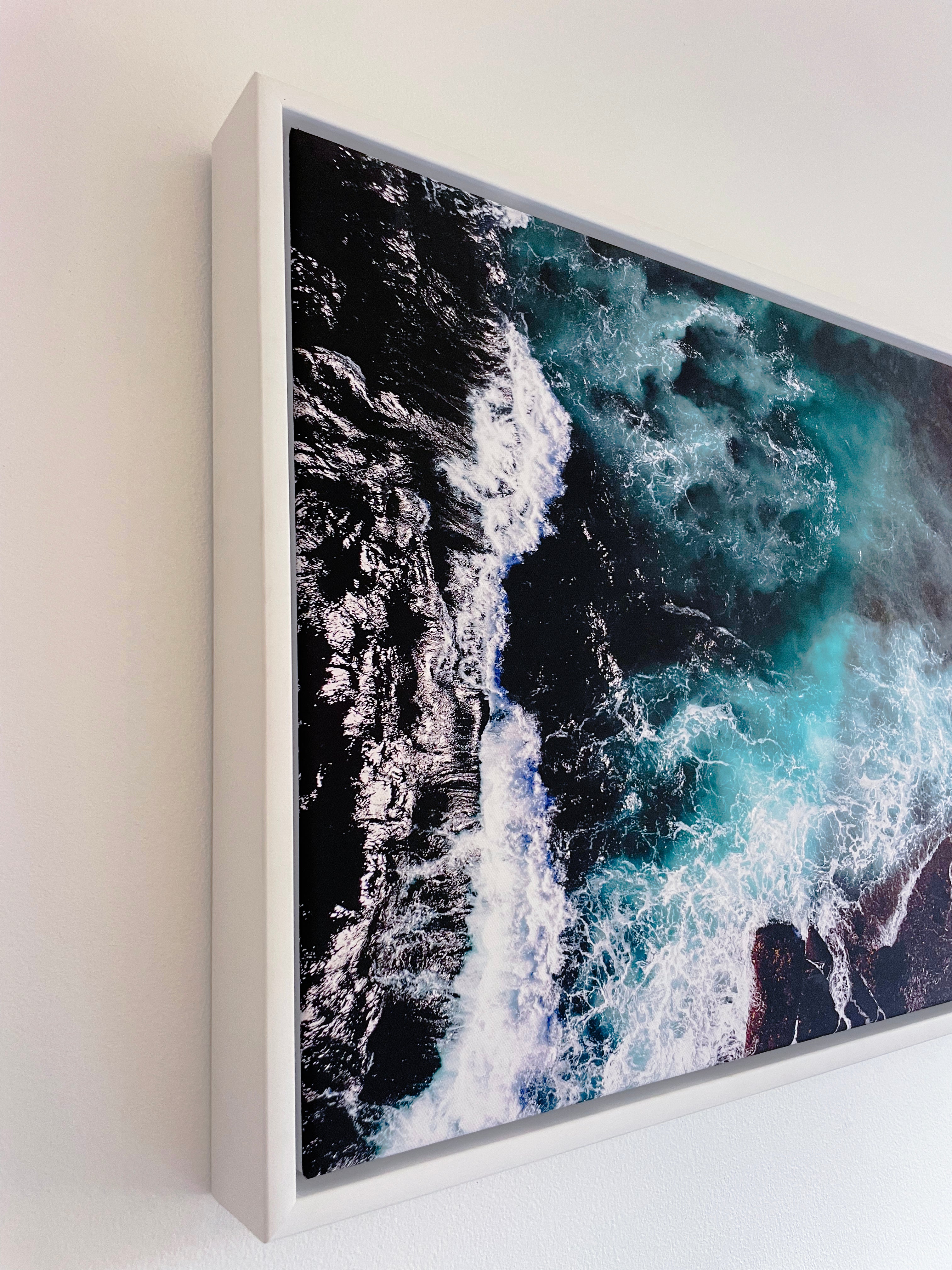
Shadow Box Frames
Add a custom made shadow box frame to your acrylic, canvas, metal, or leather wall art.
A shadow box frame creates a gap between the wall art and the frame, producing a shadow effect that adds depth and further highlights the artwork.

Shadow Box Frame Selection
Choose between our white, black or Scandinavian oak shadow box frames.

Gold and Silver Frames
Gold or silver shadow box frames are also available on request.
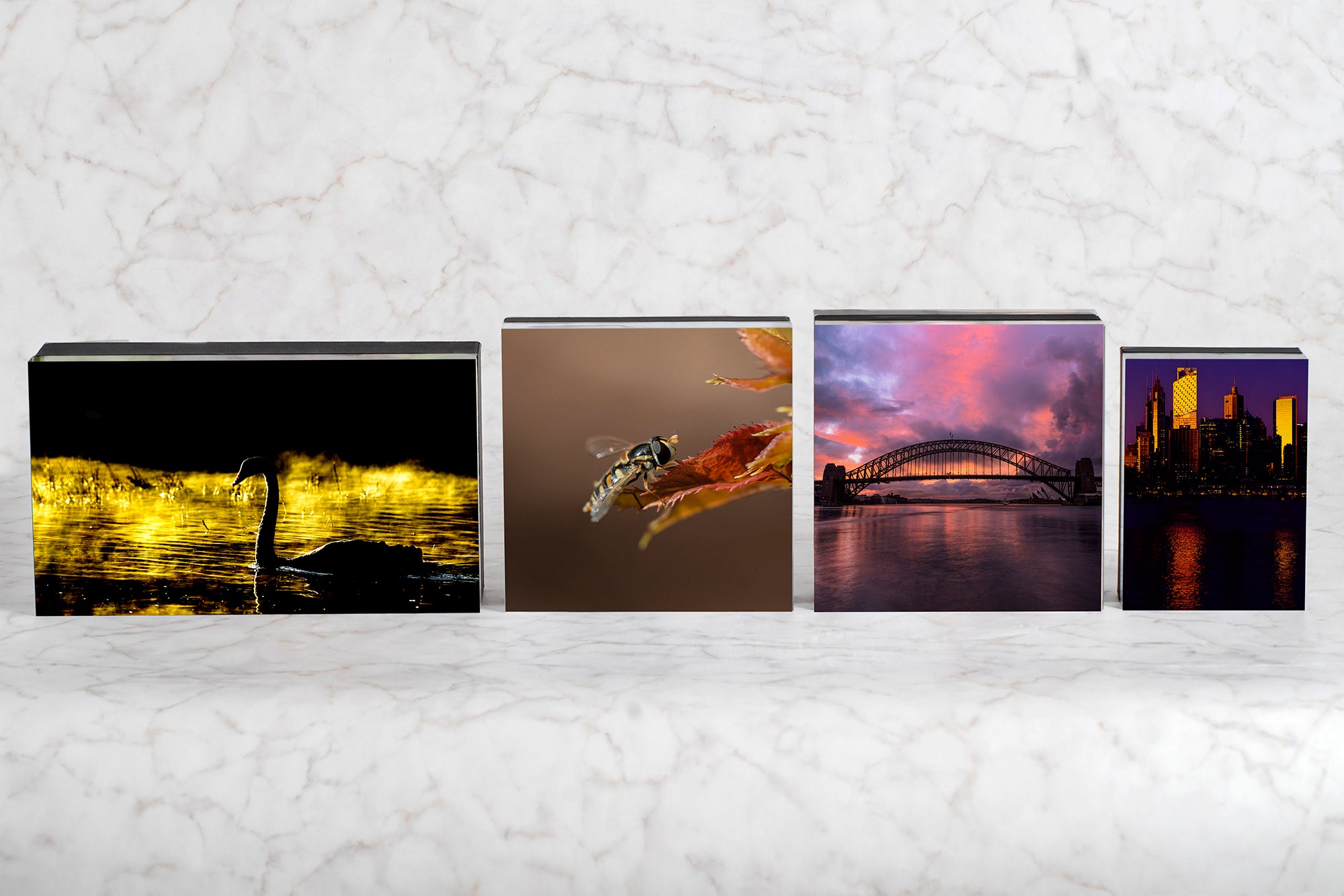
Acrylic Tabletop Art
Handmade table top art acrylic pieces lined with black distressed Italian Leather or Eco Leather - perfect for desks, shelves, and tables.
Acrylic Tabletop Art - Block only
- 1" | 2.5 cm acrylic thickness
Note: Acrylic tabletop art pieces will have black lamination on the back.
Acrylic Tabletop Art with Black Eco Leather
- 1" | 2.5 cm acrylic plus a 1" | 2.5 cm eco leather lined panel
Acrylic Tabletop Art with Black Leather
- genuine Italian leather
- 1" | 2.5 cm acrylic plus a 1" | 2.5 cm leather lined panel
Customisations
Add a note at checkout if you would prefer the following customisation:
- 2" | 5 cm eco leather panels
- 2" | 5 cm leather panels
Note: The visual shown is a mockup.
Artwork authenticity
Artwork is accompanied by a hand-signed certificate of authenticity.
How to hang your fine art prints
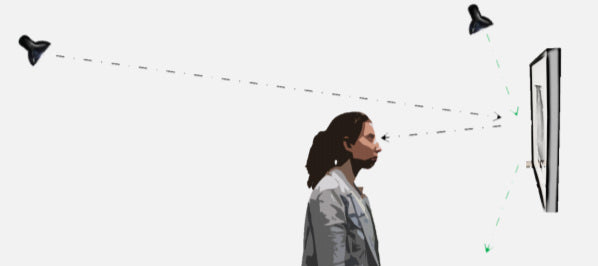
We protect our fine art prints with Tru Vue Optium Museum Acrylic® same as the world’s most renowned museums. This Acrylic is trusted for many reasons:
- 99% UV Protection
- Anti-Reflective
- Abrasion Resistance
- Anti-Static
- Shatter Resistance & Safety
- Cleans like glass – easy to clean with common household glass cleaners. No special acrylic cleaners needed.
Certification
- Conservation Grade Protection
- ISO 18902 Photo Safe
- Safe for Friable Materials
Angle of the light & glare
Ideally, lighting should be angled at 30 degrees to reduce glare. By changing the angle of the light, you can change the angle of reflection and solve the problem with glare.
If the angle of the light source can’t be changed and the artwork can’t be moved, a modest amount of lean can be helpful in providing the best viewing experience.
Positioning artworks directly opposite windows allowing in natural sunlight should be avoided from a conservation perspective, no matter what glazing is on it. If the artwork is hung opposite a window, a sheer shade or screen on the window can make a difference in the amount of visible reflection.
Museum vs. home light difference
Museum light
In a museum gallery, light levels will be 50 lux to 100 lux. At a 90-degree viewing angle, less than 1.5% of light will be reflected with Optium, meaning .5 lux - 1 lux will be reflected. (This is the scenario where the glazing is completely invisible.) At an off angle, up to 4 lux might be reflected.
An indoor space with windows will have a light level between 1000 and 5000 lux. With Optium, the reflection level will measure between 10 lux and 50 lux when standing directly in front of the picture. At an off-angle, the amount of reflected light could be between 40 lux and 200 lux.
Home light
In general, lighting levels in a home are between 150-1000 lux. In this scenario, the reflection level of Optium will measure between 1.5 lux – 10 lux, and at an off angle, between 6 lux and 40 lux could be reflected. The amount of reflection, however, is significantly lower than the reflection of regular uncoated glass or acrylic.
